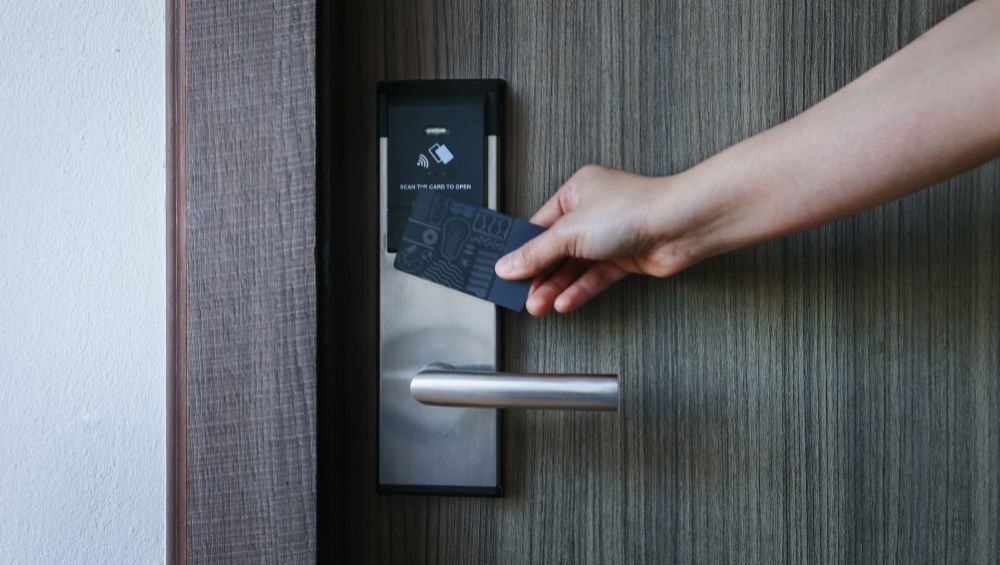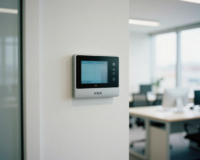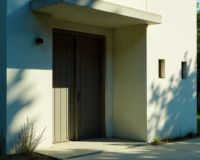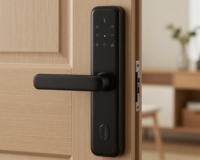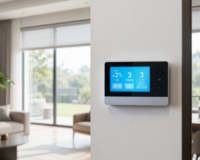Smarthomes are increasingly popular, and one of the areas you can smarten up is your door locks. The global smart lock market was valued at $1.4 billion in 2020 and is projected to grow by 20% annually until 2028. This growth suggests a strong interest in smart locks, which are not entirely new but are replacing traditional locks found in most developed world homes. While investing in a smarter door may not be a top priority for everyone, if a smart lock enhances your life, it could be a valuable upgrade. Let’s explore the security of smart locks.
What are Smart Locks?
Smart locks are electronic devices that are designed to provide keyless entry and enhanced security for homes, businesses, and other properties. They replace traditional locks and keys with digital technology, allowing users to lock and unlock doors using a smartphone, a keypad, a key fob, or even voice commands.
You can operate a smart lock in several ways: including with a keycard, a code, your fingerprint, an app, a home assistant, or any combination of these things. Some even accept a standard key.
Smart locks can enhance the security and convenience of your property, but it’s important to choose a reputable and secure model and follow best practices for maintaining their security. Keep in mind that no technology is completely immune to hacking or malfunctions, so it’s important to stay informed about potential vulnerabilities and updates from manufacturers.
Are Keyless Smart Locks Secure?
Smart locks can often be more secure than traditional locks, which might come as a surprise to some. The reason behind this is that there are generally fewer individuals skilled in hacking a smart lock compared to those capable of picking a traditional lock. Picking a lock is a skill that can be learned relatively easily with the help of online resources like YouTube and some practice.
With a standard lock, someone with lockpicking skills and the right tools can gain unauthorized access to your property without leaving any obvious signs of a break-in. In contrast, smart locks typically feature multiple layers of security. They often use encryption to protect digital keys and communication, making it considerably more challenging for unauthorized individuals to gain access through hacking.
Additionally, smart locks can provide features that enhance security, such as real-time alerts and tamper notifications. Many models have built-in alarms and the ability to lock automatically after a certain period, reducing the risk of leaving your door unlocked accidentally.
While smart locks are not immune to security threats, the right configuration and best practices in cybersecurity can significantly mitigate these risks. When properly maintained and used, smart locks can provide a higher level of security and convenience compared to traditional locks.
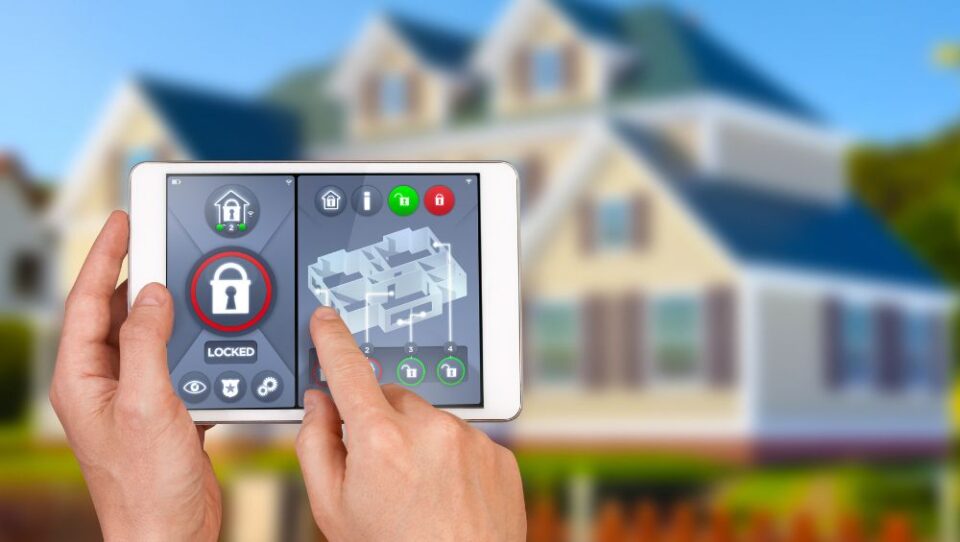
What Are The Benefit Smart Locks?
Smart locks offer a range of benefits that can enhance both the security and convenience of your home or property. Here are some key advantages of using smart locks:
Keyless Entry
Smart locks eliminate the need for physical keys, making it easier to access your property. You can unlock your door using a smartphone app, a PIN code, a key fob, or even biometric authentication like fingerprints or facial recognition.
Remote Access
Many smart locks can be controlled remotely via a mobile app. This means you can lock or unlock your door from anywhere with an internet connection. This is especially convenient for letting in guests, family members, or service providers when you’re not at home.
User Management
Smart locks allow you to create and manage digital keys for family members, friends, and others. You can grant temporary access, set schedules, and receive notifications when someone enters or exits your property.
Security Features
Smart locks often come with advanced security features, including encryption, tamper alerts, and built-in alarms. Some models even offer two-factor authentication for added protection.
Integration with Smart Home Systems
Smart locks can be integrated into broader smart home ecosystems. They can work seamlessly with devices like smart doorbells, security cameras, and voice assistants, providing a comprehensive home security solution.
Battery-Powered
Most smart locks use batteries, and they typically provide low-battery notifications. Some models can last for several months on a single set of batteries.
Backup Mechanical Key
Many smart locks come with a mechanical key as a fail-safe in case of electronic failures or dead batteries.
While smart locks offer numerous benefits, it’s important to choose a reputable model and follow best practices to maintain their security. Like any technology, they are not entirely immune to potential vulnerabilities, so staying informed about updates and potential security risks is crucial.
Potential Security Concerns
Despite their security features, smart locks are not immune to potential vulnerabilities. It’s crucial to be aware of these concerns and take steps to mitigate them:
- Hacking and Remote Attacks: Smart locks that connect to the internet may be vulnerable to hacking attempts. Weak passwords and unpatched software can be exploited by cybercriminals.
- Bluetooth Sniffing: Bluetooth-connected smart locks can be vulnerable to eavesdropping if the attacker is within close proximity to the door.
- Battery Dependency: Many smart locks are battery-powered. If the batteries run out or are removed, the lock may become inoperable, potentially leaving your property vulnerable.
- Physical Tampering: While smart locks have tamper alerts, determined intruders may still attempt to physically damage or manipulate the lock.
- Lost or Stolen Devices: If a smartphone or other control device is lost or stolen, unauthorized access to the smart lock may be possible if not properly secured.
How Do Smart Locks Work?
Smart locks are designed to provide keyless entry and are powered by batteries, which typically have a lifespan of about 10 months to a year. Inside a smart lock, you’ll find electronic components that include a motor responsible for turning the internal lock mechanism. This motor performs the same function as if you were using a physical key or manually turning the thumb turn on the lock.
Many smart locks offer additional features, such as keypads. With a keypad, you can set a unique PIN code to unlock the door, adding an extra layer of security and convenience.
To enable smart functionality and remote control, most modern smart locks are designed to connect to your home’s Wi-Fi network. This Wi-Fi connectivity allows you to control the lock remotely using a mobile app, integrating it into your smart home system for seamless operation and monitoring.
Furthermore, Bluetooth connectivity is a common feature found in many smart locks. It allows you to establish a direct connection between your smartphone and the lock. This can be especially useful for short-range operation, such as unlocking the door when you’re in close proximity to it.
Best Practices for Smart Lock Security
To ensure the security of your smart lock, consider the following best practices:
- Strong, Unique Passwords: Use strong, unique passwords for your smart lock accounts. Avoid using default passwords or easily guessable ones.
- Regular Software Updates: Keep your smart lock’s firmware and associated apps up-to-date to patch security vulnerabilities.
- Enable Two-Factor Authentication: Whenever possible, enable 2FA to add an extra layer of security to your smart lock system.
- Secure Your Control Devices: Protect your smartphone or other control devices with PIN codes, fingerprints, or other biometric security measures.
- Regularly Monitor Access Logs: Regularly review access logs to ensure that only authorized individuals are accessing your property.
- Choose Reputable Brands: Opt for well-known and reputable smart lock brands with a history of security-conscious design.
- Install Additional Security Measures: Consider supplementing your smart lock with additional security measures, such as security cameras and alarms.
- Create an Emergency Plan: In case of technical failures, always have a backup plan, such as a spare key or alternative entry method.
Conclusion
Smart locks offer a new level of convenience and control in home security, but it’s crucial to be aware of their potential vulnerabilities and take steps to protect your property. By following best practices, keeping your smart lock software updated, and maintaining strong access controls, you can enjoy the benefits of smart lock technology while ensuring the security of your home. As the world of smart technology continues to evolve, staying informed and proactive about your home security is more important than ever.
Read more: Benefits of Smart Lighting and Energy Saving Systems

